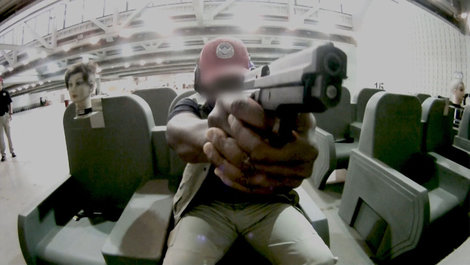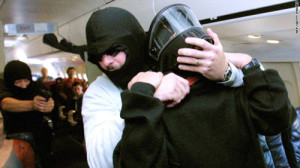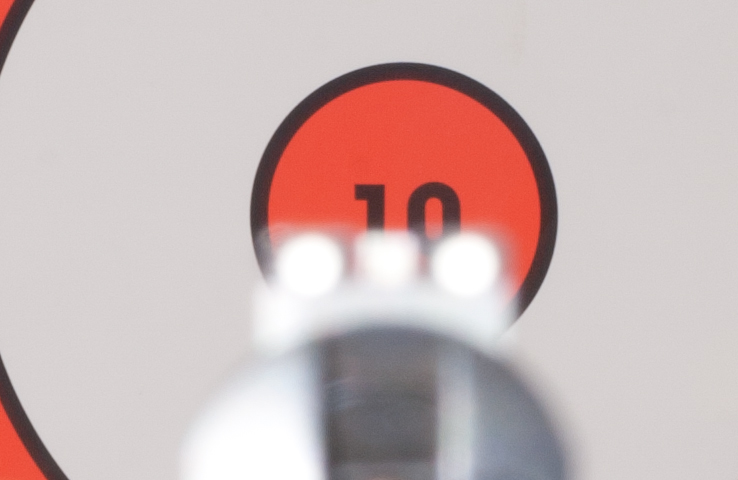
Modern Day Gunfighting Lawmen

Gunslinging Lawmen of the 20th Century – that you never Heard of
First thought that comes to mind is Wyatt Earp. We’re talking lawmen from the mid 1930’s to later in the 20th century. You’ll see a common core that they all share in their survival stories – that is to be very decisive and not hesitate when it was time to pull the trigger. Maybe, this was a function of the eras during which some of these officers worked, partly the assignments they had, and partly it was just that their own natures made them particularly proactive.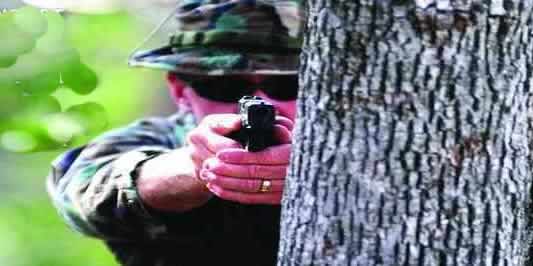
What stands out is that these lawmen did not use the conventional best practice way of shooting that we’re accustomed to. Such as sight alignment, grips, smooth trigger pull, sight picture, Isoceles/Weaver stances, etc… Though, these lawmen have their way of shooting or what was taught back in those days…
These lawmen were no slouch when things heated up, they fought the bad guys with grit and determination. Their high level of discerning a deadly situation and making a quick decision to act on it to save lives help in providing a safer community. Without further adieu here are some of the 20th century lawmen that you may never have heard of:
Ralph Friedman
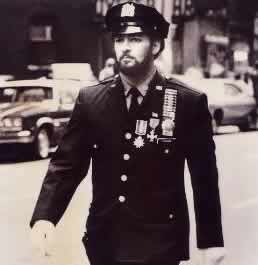
NYPD’s Most Decorative Detective of the 70′-80’s.
He was assigned to the 41st Precinct in the Bronx, known as Ft Apache. It was one of the highest crime rate areas in the country. During his career he made over 2,000 arrests. Ralph Friedman was involved in 15 shootouts in the course of which he was forced to shoot eight perpetrators, killing four.
After two years on with NYPD, in 1972, he had to kill a man in the line of duty for the first time. Here is how Friedman describe this terrible experience.
The following is an excerpt from Ralph Friedman book “Street Warrior”:
“Muzzle blasts lit up the area. We’d passed through a short foyer adjacent to the living room and were now standing in a hallway that led to the rear of the apartment. There was a black male three feet in front of us, shirtless, gun extended, firing rapidly. Kal went down almost immediately, firing his revolver as he pitched forward. The noise of the gunfight in a confined space was ear-shattering, and I felt as if an ice pick was being shoved into my brain. I had my gun extended and was firing rounds at the guy who was shooting at us. The room was caught up in a strobe-like miasma of light, scream and curses.
“The gunman tried to get by me, but I grabbed his shoulder and we struggled, grunting and swearing, although our voices sounded muffled given the effect the gunshots had on my hearing. Everything was happening very quickly, yet it felt like slow motion. I was fighting for my life, nearly deaf from the gunshots, and wondering if I’d been hit. The shooter was about my height, medium build. A river of adrenaline was pumping through me, and I knew if I didn’t put him down, I was gonna die.
I heard the approaching cavalry — the job now a rapid response ‘shots fired,’ allowing for flashing lights and sirens all the way — or thought I did. The troops were coming, and I hoped they’d arrive in time. As we fought, I pressed my gun against the gunman’s chest, hoping I still had ammo, and fired. I heard the welcome sound of a boom, no empty chamber click. The gunman went down like a dropped anchor. I found later he’d been hit a few times, but my last round got him in the heart. The three of us had fired a total of 18 rounds in what couldn’t have been more than a 10-second gun battle inside what seems like a medium-sized closet.”
Here is what he learned from his gun fighting experiences:
-I carried two while on duty — so why learn an entirely new weapon? Surviving a gunfight is about shot placement, not throwing numerous rounds at a target and hoping a few hit their mark. Training is the key, not necessarily large-capacity magazine.
-Carry enough guns. Carry enough gun. Sub-optimal 158-gr. SWC .38 Special rounds were issued during Friedman’s time on NYPD. Revolvers were superseded by 16-shot 9mm autos in the early 1990s, and the last .38 grandfathered as a primary duty gun left the streets of the Big Apple in August of 2018. Circa 1999, New York City cops at last got hollow point ammunition, and the 9mm Speer Gold Dot 124-gr. +P seems to have solved long standing complaints about feeble ammo from the rank and file of New York’s Finest.
-Maximum control equals maximum hit potential. Friedman told me except for when he killed the man who shot his partner, while grappling at muzzle contact, he was able to hold his .38 in both hands in all his other shootings. He also said every shot he ever fired on the street was double action.
-Have secure holsters, including off-duty scabbards that won’t dislodge from your belt in a strenuous physical fight.
Delf A. Bryce also known as “Jelly Bryce”

Jelly Bryce was an Oklahoma City policeman and an FBI agent, active from 1928 to 1958. He was significant for being an exceptional marksman and a fast draw. He survived 19 gunfights, some during the “gangster era.” Bryce was considered a master of point shooting.
At the age of 22, on his second day with Oklahoma City police he confronted a thief trying to hot-wire a car. He identified himself as a police officer, after which the suspect drew a pistol; Bryce then drew his and shot and killed the criminal.
On another occasion during his first year, while patrolling in a police car, he confronted two thieves attempting to break into furniture store premises. After Bryce demanded their surrender they both fired pistols; Bryce then drew and fired twice, killing both men.
Jelly Bryce shooting skills were freakingly amazing and accurate. Though, he possessed natural shooting talent, he also trained relentlessly both with live fire and dry firing in front of a mirror. What sets him apart from someone in a gunfight is that Bryce can quickly assess the situation and beat his perpetrator to the punch (shoot) first while on the move.
For those that knew him, Jelly Bryce was a fanatic when it came to training. Here are some of his methodology:
Here’s Youtuber OrigamiAK demonstrating shooting on the move from the appendix carry.
Bob Stasch – Chicago PD Veteran Of 14 Gunfights
Here is a 52 minute interview with Chicago PD Lieutenant Bob Stasch. He has been in 14 gunfights. Many people have big beliefs and swear on “stopping power”. Hearing Bob Stasch encounters in his LEO gunfights it seems that there is a possibility that people have a stronger will to survive beyond rational belief. I tell customers at work, that people will surprise you. They can defy physics and rationality and Bob Stasch’s example is a good one.
He shares his personal retort to “why did you fire?”. “I fired to live” as opposed to “I fired because i was in immediate danger of death or serious bodily harm”. It is a subtle change that still conveys the same amount of information in a short and concise method.
Frank Pape Chicago PD

Pape “sent 300 men to prison, five to the electric chair and engaged in more than a dozen gun battles, surviving without a scratch while sending nine suspects to their graves.” Pape had never fired his gun in the line of duty until his partner, Morris Friedman, was gunned down. After that, he “carved for himself a reputation for fearlessness if not ruthlessness, sometimes going after criminals with a Thompson submachine gun.
‘My attitude was: If you shoot at me, I’m going to kill you if I can,’ Pape said years later. ‘Of the nine people I shot, every one of them had a gun and in every instance they had used it or were about to use it. I wouldn’t take them into custody and I don’t give a damn who criticized me for it.'”
Due to the nature of Frank Pape’s nature of hazardous assignment, he was known to carry multiple pistols. Before high capacity magazine was the norm, Frank Pape needed to be armed with multiple pistols while on these raids. So Frank custom tailored his pants and coat pockets to carry extra pistols.
Frank Pape was known to be armed with .38 caliber revolvers, 44 Magnum and even a Thompson machinegun when taking down robbers.
Jim Cirillo
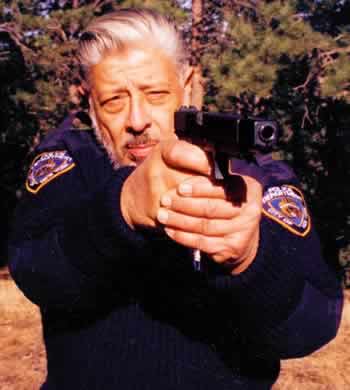
The late Jim Cirillo was a member of the New York City Police Department’s Stakeout Squad (SOU), where he was forced to kill at least 11 men in the course of more than 20 gunfights during the 40-man unit’s some 250-plus stakeouts.
Jim was armed with his issue Smith & Wesson M10 4-inch barrel .38 Special revolver, but he also used a matching gun as one of his back-ups, which included his personally owned Colt Cobra .38 Special 2-inch barrel and Walther PPK in .32 ACP. He was also armed with either of two types of 12-gauge shotguns – a short, double-barrel Savage or a short-barrel Ithaca Model 37—and the option to use an S&W Model 76 9mm submachine gun.

In an interview conducted by Paul Kirchner a question was asked whether the use of sights during a gunfight was necessary. Jim said he did use his sights whenever he could.
In his first and most written-about shootout (the second of the SOU and his first gunfight), he and “George Ballinger” (a fictitious name at the officer’s request) set up at the Old McDonald’s Farm Store on 101st Avenue in the Jamaica section of Queens, New York. Jim fired six shots in 3 to 4 seconds against threats with exposed areas no more than 8 inches in diameter at distances of 20 to 25 yards.
Jim and his partner were hiding behind and slightly above the cashier counter when the three robbers entered. One confronted the cashier. As Jim rose to challenge him, the codpiece on Jim’s vest fell loudly to the floor, causing the robber to duck down behind the counter and run along its length. Jim shot him three times in the head and killed him. He then fired at the other two as they ran out. His partner also fired, using a shotgun. The two robbers were later arrested, suffering from handgun and 00-buckshot wounds. Jim said he was looking so hard at the front sight of his revolver he could see the serrations in it.
What was and is still ignored are instances where he or other officers were not able to do such sighting. In these later instances, they were confined in small spaces or had to fire through small shooting ports such that they could not sight their handguns. They still came out on top with the felons either dead or seriously wounded.
In my conversations with him, Cirillo further clarified what he meant, saying he knew where the sights were while he looked at the “background,” He also said his shootings were done at the subconscious level and reflected how he trained.
If you have the time, favorable lighting and the need for a precise shot at some distance, take the best sight picture you can get. Conversely, if you are up close and under attack, use only as much (if any) sighting needed to make the same well-placed shot, keeping in mind Jim also found that only accurate shots, regardless of caliber, can stop a life or death fight.


